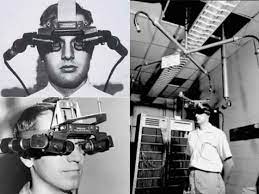VR as We Know It: The Inventor of Virtual Reality – Xidax
[ad_1]
Humans have long been finding new ways for us to experience the world around us. From panoramic paintings to the Oculus Quest 2, virtual reality has become more and more of a reality through the centuries. Likewise, the definition of VR has been evolving with us as we get used to the new experiences of film, photography, and video games.
Today, VR is thriving like never before. The field is expected to explode with growth in the coming years as more games adapt and more people get into the scene. However, when it comes to how we experience VR today, we owe a lot of thanks to computer scientist Ivan Sutherland. He created the first machine that allowed a user to experience a new reality in a way that we can still recognize.
The Father of Computer Graphics
Sutherland has been nicknamed the Father of Computer Graphics due to his contributions to the field, such as the invention of Sketchpad. This program was the precursor to computer-aided design (CAD) programs used today. He attributes his success to the encouragement of his parents. They pushed him to engage with the world and play with toys like a Richter set. For six decades, he has contributed his abilities to the world of computer design and VR we know today.
After completing the work on Sketchpad for his Ph.D. thesis. Sutherland later started a project outlined in his paper titled “The Ultimate Display” in 1965.
The Sword of Damocles
At Harvard University in the 1960s, Sutherland and his students Bob Sproull, Quintin Foster, and Danny Cohen constructed the first recognized attempt at what we know today as a VR headset. The machine was dubbed “The Sword of Damocles” due to its large size.
This large device was suspended from the ceiling to hold its weight off the user. It also contained the linkages needed to track the head movements. Now, this VR headset couldn’t show you much. The user was able to peer into a wire-framed scene. The linkages in the arm-tracked head movement enabling the user to look around the room. The wire room they were looking into is nothing like what we can experience through VR today, but it had to start somewhere.

It was a crude setup by all means. Yet it was the first time we saw something akin to what we use today to engage with virtual reality.
What About Now?
Sutherland is still working in the field today teaching at Portland State University. He was inducted into the National Inventors Hall of Fame in 2016 for his contributions. His work did what it was meant to do. Despite a lull in VR technology at the end of the 1990s, the technology has improved far enough for us to engage in fantasy worlds of wonder through headsets.
The world of VR will continue growing for years to come. VR has hundreds of potential applications within gaming and other fields. We may never get to the level of Ready Player One, but we still have far to go. Xidax is always here to help if you are in need of the computer power needed for VR. Until then, game on!
[ad_2]











